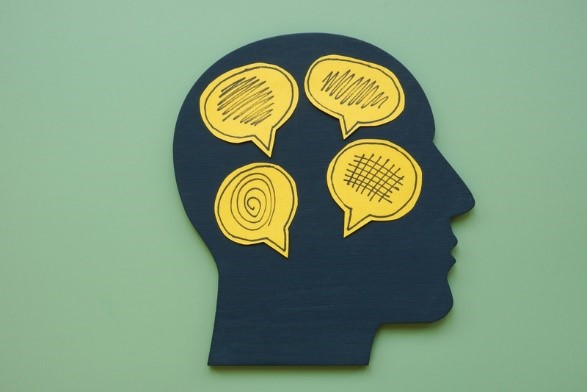Think about how many thoughts go through your mind each day. Now think about how many of those thoughts are negative. Our brains are designed this way to protect us. This is why we’re often much more aware of what is going wrong or could go wrong than what is going right or could go right in any given scenario. It’s survival! However, most of the time, this protective response hinders us because our thoughts aren’t always factual, and they directly impact how we feel and behave.
When you have a positive, happy or kind thought, your brain releases chemicals that make you feel good (relaxed muscles, even breath/heart rate, calm feelings). On the flip side, when you have a negative, sad or unkind thought, your brain releases chemicals that make you feel bad (tense muscles, elevated heart rate, inflammation). The good news is that we can train our brains to dispute negative thoughts and start thinking more positively, benefiting our overall health and happiness.
“ANT therapy,” or learning how to kill the ANTs (automatic negative thoughts), is a term originally coined by Dr. Daniel Amen, a leading psychiatrist, neuroscientist, New York Times bestselling author and international speaker. He came up with this term after returning home from a particularly challenging day with his patients and finding an ant infestation in his kitchen. He thought — just as the ants had infested his kitchen, so too were his patients’ brains infested with negative thoughts, robbing them of joy, success and happiness. Thus, “ANT therapy” was born.
Dr. Amen determined that there are nine different species of ANTs that frequently plague us:
- All-or-nothing thinking: Viewing things as all good or all bad
- “Always” thinking: Thinking in absolutes like “always,” “never,” “no one,” “everyone,” “every time,” “everything”
- Focusing on the negative: Only seeing the bad in a situation
- Fortune telling: Predicting the worst possible outcome with little or no evidence
- Mind reading: Believing you know what another person is thinking without them saying so
- Thinking with your feelings: Believing negative feelings without questioning their accuracy
- Guilt beatings: Using words like “should,” “must,” “ought” or “have to”
- Labeling: Attaching a negative label to yourself or someone else
- Blame: Blaming someone else for your problems
These ANTs, when unchecked, can distort reality, making it seem worse than it really is. After reading the list, is there a specific ANT species that infests you most often?
Now that you’re aware of the ANTs you encounter, let’s learn how to exterminate them! You’ll do this by writing the negative thought down, labeling its species and then disputing it. Here are some examples:
| ANT | Species of ANT | Kill the ANT |
| I could never complete a 5k run. I’d give up within the first mile. | Always thinking/fortune telling | I could do it if I took the time to train for it. I might even enjoy it and gain a new hobby. |
| My husband never listens to me. | Always thinking | That’s just not true. He listens to me most of the time. Today he’s just distracted, and I’m feeling frustrated. |
| I’m a failure. | Labeling | Sometimes I fail, but I always look to learn from it. Failure is still an opportunity for growth. |
| Suzy is mad at me. | Mind reading | I don’t know that for sure. Maybe she didn’t smile at me because she’s having a bad day, or maybe she didn’t see me. I should check in with her. |
| It’s Vinny’s fault. | Blame | I will look at my part of the problem and look for solutions to make it better. |
As you can see, your thoughts are extremely important! By consistently working to acknowledge, identify and dispute the ANTs you encounter, you can rewire your brain. In fact, the more you practice this, the easier and more automatic it will become. Use this worksheet to continue working on this on your own. You’ve got this!
By: Megan Petriello


Most Commented